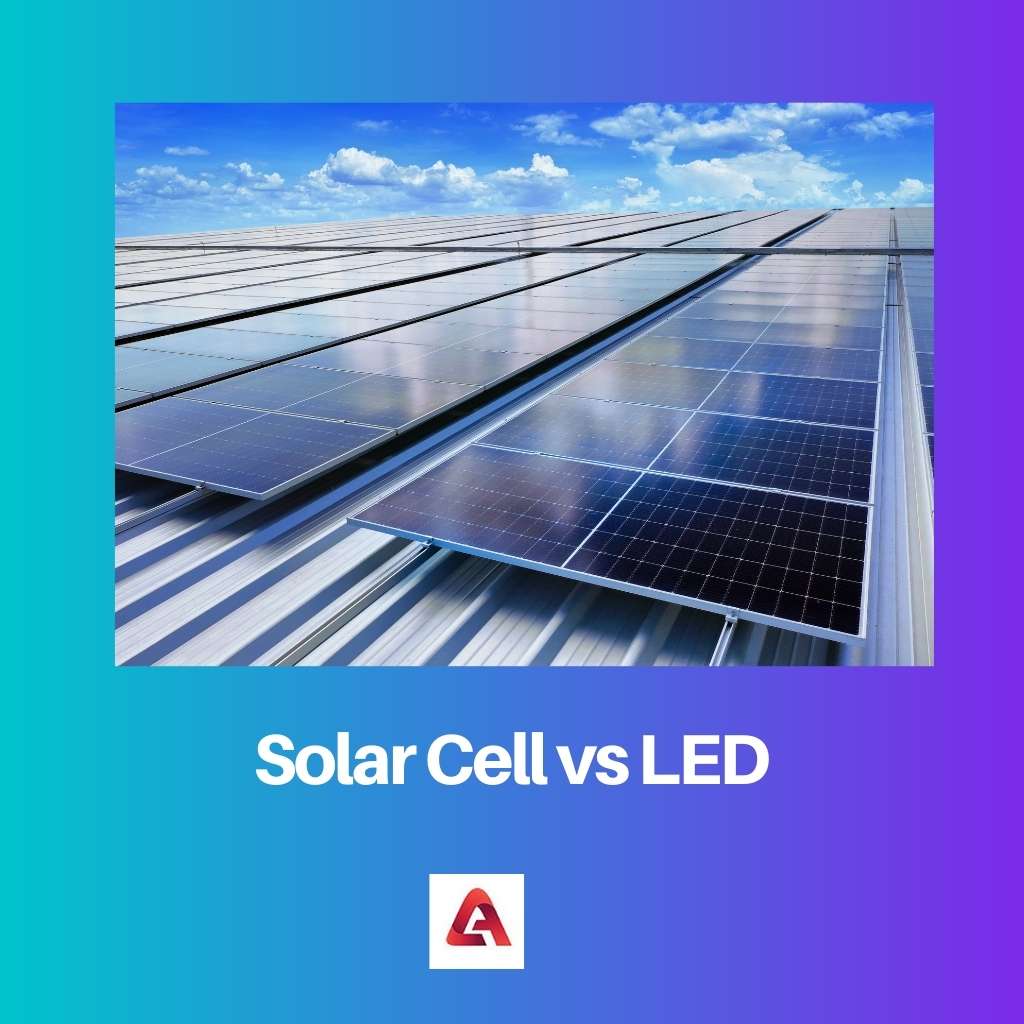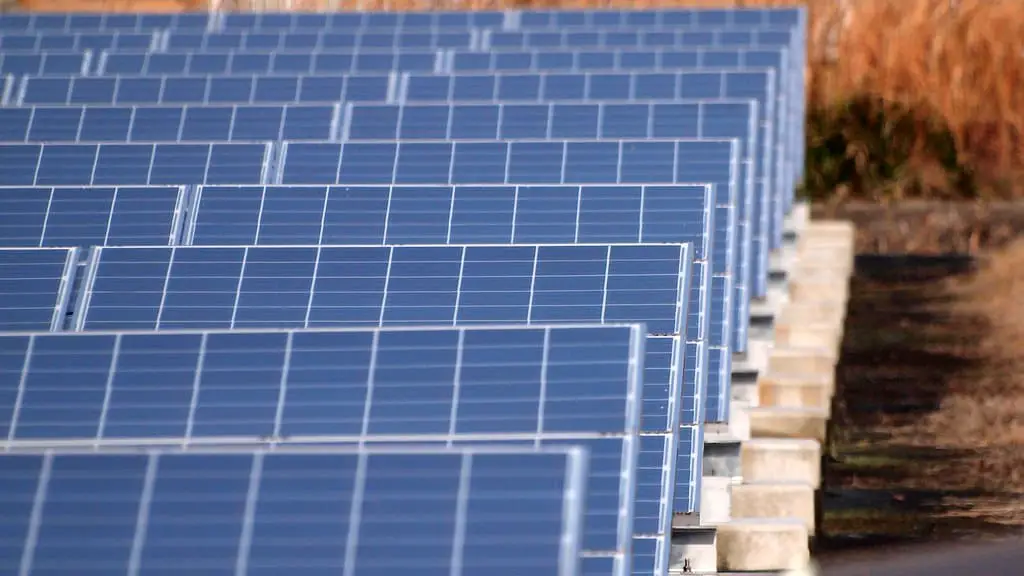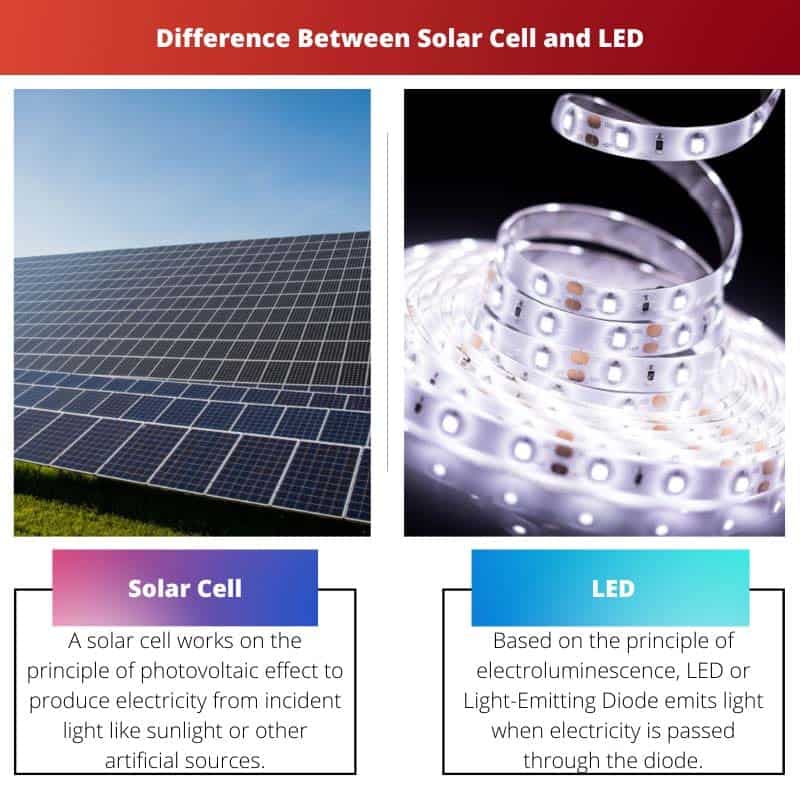Energy is a prominent topic for decades and it ever will be. The topic of sustainable energy has kept the greatest of minds at work and urged them to find the solution.
These solutions come with era-defining excellent inventions. Two such discoveries were of the Solar Cell and LED.
Key Takeaways
- Solar cells convert sunlight into electrical energy, while LEDs transform electrical energy into light.
- Solar cells are made of semiconductor materials like silicon, while LEDs consist of a p-n junction diode.
- Solar cells have applications in generating renewable energy, while LEDs are used for various lighting and display purposes.
Solar Cell vs LED
The difference between Solar Cell and LED is that Solar Cells produce electricity directly from light whereas LEDs produce light directly from electricity. In other words, Solar Cells convert light into a form of electricity. On the other hand, LEDs convert the electricity into visible light and emit it.

A solar cell uses the photovoltaic effect to produce electricity. This is the reason why sometimes it is also referred to as a photovoltaic cell.
Multiple solar cells can be organized together to prepare a solar module that can absorb a large amount of heat resulting in increased electric production.
LED is an acronym for Light Emitting Diode. They emit light when there is a potential difference between the anode and the cathode.
Due to the reason that they are efficient and have a long lifespan, they are used for various purposes like lighting, electronic circuits, the automotive industry, and others.
Comparison Table
| Parameters of Comparison | Solar Cell | LED |
|---|---|---|
| Purpose | To convert light into electricity | To convert electricity into light |
| Invented in | 1954 | 1962 |
| Invented by | Calvin Souther Fuller, Daryl Chapin, and Gerald Pearson | Nick Holonyak |
| Principle used | Photovoltaic Effect | Electroluminescence |
| Final output | DC (Direct Current) electricity | Illumination or light |
| Applications | Used in solar toys & cars, portable radios, solar modules, etc. | All kinds of lighting needs, automobiles, circuits, etc. |
What is Solar Cell?
A solar cell works on the principle of photovoltaic effect to produce electricity from incident light like sunlight or other artificial sources.
A solar cell can be made up of any semiconductor, but silicon is used the most due to its excellent properties.
There are two layers of silicon stacked upon each other. One layer is called n-type and the other p-type. When light is incident on the surface of a cell, it gets absorbed by the electrons of silicon.
These electrons now get “excited” and start to move here and there hence producing electricity. This electricity is a form of Direct Current (DC) but it can be converted into Alternating Current (AC) using an inverter.
The first solar cell was created in 1954 by Calvin Souther Fuller, Daryl Chapin, and Gerald Pearson of Bell Laboratories. However, the history of the photovoltaic effect dates back to 1839.
Today, solar cells are used in solar-powered toys and other small devices that run on electricity. The bigger use of a solar cell is the solar module which is created by combining multiple cells.
A solar module is used to absorb the sunlight and convert it into electricity. This is a great way for sustainable development.

What is LED?
Based on the principle of electroluminescence, LED or Light-Emitting Diode emits light when electricity is passed through the diode.
The diode is made up of a positively charged p-type semiconductor and a negatively charged n-type semiconductor. These semiconductors are separated by a boundary called “band gap”.
When the diode is forward biased, i.e. the positive end of the battery is connected to the positive end of the diode and the same with the negative, repulsion occurs in both the semiconductor materials.
Due to this repulsion, the charge starts to concentrate around the band gap which eventually breaks allowing the electrons to combine and transform into photons of light.
The color of the emitted light depends upon the energy of the released photons which depends on the material as well as the energy required to pass the band gap. Different materials can be used to emit different colors of light.
Though the history of LEDs dates back to 1907, it wasn’t until 1962 when Nick Holonyak invented a diode that emitted visible red light.
Now, LEDs are used in the automobile industry, electronic industry, electrical industry, and anywhere there is a requirement of lighting. There are also Organic LEDs (OLED) that use an organic compound as a semiconductor.

Main Differences Between Solar Cell and LED
- The function of a solar cell is to convert light into electricity. On the other hand, LED is used to convert electric current into illumination or light.
- A solar cell works on the principle of photovoltaic effect whereas a LED works on the principle of electroluminescence.
- Solar Cell was developed by Calvin Souther Fuller, Daryl Chapin, and Gerald Pearson. LED was developed by Nick Holonyak.
- Solar Cells were invented in 1954 as compared to LEDs which were invented in 1962.
- A solar cell outputs electricity in the form of direct current (DC) whereas a Light-Emitting Diode (LED) outputs light which is visible.
- The main applications of a solar cell are solar modules, solar toys such as cars, small calculators, and other devices which run on solar energy. However, LEDs are used for lighting in homes, electric circuits, automobile headlights, traffic lights, etc.

- https://books.google.com/books?hl=en&lr=&id=4Ok7DQAAQBAJ&oi=fnd&pg=PP7&dq=solar+cells&ots=j6gQQw-3JE&sig=iZbaIw9xzINvH1rHCGplfddF97c
- https://www.taylorfrancis.com/books/mono/10.1201/9781420076639/introduction-light-emitting-diode-technology-applications-gilbert-held
